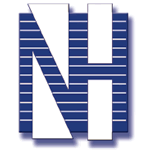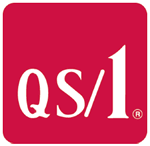Products & Technology
The Brains of the Operation
HME inventory management strategies and technologies continue to advance with the industry's challenges.
- By David Kopf
- Apr 01, 2014
 Smart solutions to an increasingly complex problem: that is inventory management for the home medical equipment industry in a nutshell. In the quest to drive costs from the HME business model, the inventory management technologies available to HME providers have continued to evolve — perhaps at a faster pace than many of them realize.
Smart solutions to an increasingly complex problem: that is inventory management for the home medical equipment industry in a nutshell. In the quest to drive costs from the HME business model, the inventory management technologies available to HME providers have continued to evolve — perhaps at a faster pace than many of them realize.
Successful HME businesses are often driving by one overriding capability: efficiency. As reimbursement levels and profit margins have become razor thin, providers have had to become equally sharp when it comes to driving cost out of their business strategies and processes. And perhaps no area of their business requires more efficiency than their inventory.
“With reduced reimbursement rates, providers are more sensitive to the value of their inventory,” says Richard Mehan, president of HME software company Noble House. “They’re certainly not going to maintain inventory that goes above and beyond their monthly, or quarterly needs. So it’s tightened up the ship, if you will.”
“Where we used to count nickels, we now have to count pennies,” says Ryan McDevitt, Technical Account Manager for HME software service company Brightree LLC. “A successful DME inventory management operation is now run electronically.”
And that electronic management translates to money. For many HME providers, inventory represents their biggest element of overhead. And unlike many aspects of their businesses, such as salaries, benefits, deliveries or workflow processes, inventory offers a substantial arena for finding gains. While a provider might not be able to make HR cuts, inventory can be slimmed down.
And that’s important, because money that isn’t collecting dust as products in the warehouse or as stock languishing on retail shelves can be put directly toward the bottom line. The key is for providers to ensure that they balance their need for having the right stock on-hand without having too much of it on-hand. Moreover, they need to be able to quickly replenish their supplies.
Also, providers can reduce cost by cutting the number of “touches” that happen in the warehouse, McDevitt explains. For instance, now when an order is processed, a UPS label will get generated, along with ticket with all the items. But it goes deeper than that, because multiple requests for the item can be ganged together so that warehouse staff can pick the total number and then distribute them among the outgoing orders. This means fewer trips to the same bin and, multiplied across a day, week, month or year, can save substantial amounts in terms of wasted time.
McDevitt uses the example of Handi Medical Supply in St. Paul, Minn., which installed a pick carousel in its warehouse. Sort of akin to a giant DME vending machine, orders are assigned to boxes, which travel to rotating
carousels that drop the correct type and quantity of DME into the order box. At the end of the process, staff ensure the order is correct and send it on its way. This way human interaction and product knowledge is saved for where it counts: working with patients and partners.
Moreover, more automated inventory management offers additional benefits for the HME business. For instance, whenever providers need to take static accounting of their inventory, such as at tax time, they now can simply run a report. That’s a process that previously would have consumed several days and involved overtime costs (an obligatory pizza runs) for staff having to stay in the warehouse putting neon stickers all over everything.
The Basics
To that end, providers have been leveraging technology to strike that balance. Using HME software systems, providers have been able to leverage various inventory tools that help them bring order to the chaos from which they might suffer. Some basic approaches have been develop a coding system; begin bar-coding the warehouse; and then leverage automated repurchasing. To review:
Coding. The first step in organizing inventory is determining a system for coding products. This can actually take some time, as various types of medical equipment involve different tracking requirements and other considerations. For example, how a provider decides to organize and code its oxygen supplies or rental equipment, will differ greatly from how it codes the more standalone types of DME, such as walkers or beds. Also, many providers often will want to incorporate vendor serial or product numbers into their coding. Many providers start with broad categories and narrow them down to more specific products to make the inventory management system easier to navigate and maintain.
Barcoding. Barcoding has become an incredible asset in the HME industry, because it lets everyone who touches a piece of DME (and that can be several people) quickly update the inventory system. Once a coding system is created, it can be turned into barcodes that maximize efficiency and prevents errors. Barcoding also lets management monitor inventory in real-time, or nearly real time, thanks to wireless hand-held scanners. DME is logged in as it is received and updated and tracked as it moves through the system, which is often critical to accreditation requirements.
Automated purchasing. Having just the right amount of a frequently ordered item is critical. Retain too much of the item, and a provider is wasting money; too little and a patient might go elsewhere. So, many inventory control systems can monitor user-defined thresholds for various supplies and automatically reorder them when they become too low. Also, the costs associated with making the order, such as shipping or lag time can cost nearly as much as the DME itself, so some systems will log recent purchases so the provider can review those purchases to find the best shipping price, or the least amount of lead time or shipping time needed.
Reporting. Combining inventory management with other intelligence within the organization lets providers run reports that show them what products are real revenue generators for the companies. It’s not uncommon for businesses to confuse gross revenue from a product or volume for a product with value, but with the right tools, providers can actually see what is the actual value from an inventory item.
New Challenges, New Tools
Those basic inventory technology advances have been indispensable in the HME industry, but providers don’t operate in a static environment. Over the past several years, as HME businesses have increasingly integrated technology advances into their operations and strategic plans, their inventory challenges have changed, as well.
For instance, one approach that once would have drawn sidelong glances from competitors and peers alike, is remote warehousing and drop shipping. Many providers today have sought to keep so little inventory on-hand that many of them are insisting on their manufacturer vendors and distributors to house the inventory, and then to drop ship the DME for the provider.
“From a financial perspective, those that are utilizing a distributor, their overheard or inventory asset is minimal, because they don’t have to maintain stock in-house,” Noble House’s Mehan explains. “We have some very large providers that do have a warehouse with their own inventory, but a lot of our base is of the model that makes them perfect candidates for a distributor.”
So the challenge becomes working with that distributors inventory, as if it was the providers’ inventory so that they can tell patients what providers are available, but not treating the inventory as though it were a cost. Call it “virtual inventory” Mehan says.
“They [the provider] populates their inventory management software with the appropriate part numbers and they basically ignore quantity on-hand,” he explains. “Depending upon the distributor, we have an interface where the request will go to the distributor electronically. So the distributor receives the electronic request that contains all the demographic information for the patient, and the items that are to be received. So the system
automates that process.”
A key to success in the distributor/drop-ship model is having good information, according to Brightree’s McDevitt.
“The tricks are in the ‘look back,’” he says. “Let’s say I’m going to do a traditional drop-ship model, and I’m going to all of my new set-ups out of my warehouse, and all of my re-supply via drop-ship. I think that the only true way to find out whether that wins for your company is to automate that process; when your customer service rep sends that order that nobody else has to touch it.”
Once the process is automated, the provider needs to go back and check its work, because drop-shipping isn’t a guarantee of success. It all comes down to the cost model of the warehouse. That is why reporting is crucial.
“You have to look back at a quarterly or annual comparison of what that really means for your company,” McDevitt continues. “Because some organizations do better by employing more people, because they exist in a community where local wages or cost of real estate allow them to do that.”
Like DME, inventory management is a work in progress. As the industry’s challenges grow, so will the approaches and innovations to meet them. This means that efficiency-oriented providers will continue to monitor trends in this important aspect of their business so that they can continue to turn what was once a primary cost center into a cornerstone of their survival and success.
Inventory Management Tools
Various HME software makers integrate inventory and re-purchasing tools in their offerings. Here is a roundup of some of the features offered by various HME management systems available on the market:
 AR-Express
AR-Express
Company name: DIABCO – Healthcare Software Solutions, Inc.
Web Address: www.AR-Express.net
Toll-free phone number: 800-864-6210
Type of system: A stand-alone system installed on-site
Programming languages and database environments: Microsoft Windows 7, Server 2008, MSQL 2008, .net, VB, VFP
Inventory management: The purchasing and receiving process updates inventory on-order, on-hand, and last costs for all products by manufacturer, and can produce bar coded price tags. Using the ePO feature will send purchase orders electronically to vendors. As patient orders are entered, inventory is depleted and stock status reporting gives providers a reorder tool.
 Brightree
Brightree
Company name: Brightree, LLC.
Web Address: www.brightree.com
Toll-free phone number: 888-598-7797
Type of system: A hosted, web-based/SAAS system
Programming languages and database environments: Brightree’s billing and business management solutions are built using Microsoft’s .NET framework and uses MS SQL Server for its database environment.
Inventory management: Brightree’s integrated ordering and inventory tracking maximizes inventory turnover, tracks repair and maintenance plus flags obsolete items as well as superseded products. Brightree supports handheld scanning devices to quickly and accurately count inventory items. Our Integrated ePurchasing with major suppliers, like McKesson, ResMed and Assuramed, enables seamless and accurate ordering from within the Brightree system. When integrated ePurchasing is combined with drop shipping, providers can reduce delivery charges and inventory carrying costs. Brightree works in real-time, so when shipments are received they are immediately reflected in inventory.
 CPR+, Fastrack, Caretinuum, MestaMed
CPR+, Fastrack, Caretinuum, MestaMed
Company name: Mediware Information Systems
Web Address: www.mediware.com/hme
Toll-free phone number: 866-277-4876
Type of System: A stand-alone system installed on-site; A hosted system, but uses special client software.
Programming languages and database environments: Visual FoxPro and .NET Framework front-end with a Microsoft SQL backend. Microsoft.NET, Microsoft SQL DB, and C#
Inventory management: Mediware offers full inventory control with barcoding of inventory for field scanning, ordering and replenishing of purchase orders, 850 purchase orders, full interface with MSD for patient home delivery (drop-ship) and bulk ordering. Other inventory features include purchasing and receiving, physical inventory and asset maintenance for serialized equipment.
 Inscrybe Referral Management
Inscrybe Referral Management
Company name: Authentidate
Web Address: www.authentidate.com/referrals
Toll-free phone number: 877-467-2792
Type of system: A hosted, web-based/SAAS system
Programming languages and database environments: .NET
Inventory management: Faxes are barcoded to link files to related case electronically. Interfaces available to practice management and billing systems where inventory records are kept and managed.
 MedAct Software
MedAct Software
Company name: MedAct Software
Web Address: www.medactsoftware.com
Toll-free phone number: 800-326-0314
Type of system: A stand-alone system installed on-site; A hosted, web-based/SAAS system
Programming languages and database environments: MedAct Software Client/Server Edition is a Windows based system utilizing a SQL based RDB.
Inventory management: Inventory Management Module provides the inventory management tools needed to manage your capital investment. The module maintains inventory items and details, transactions and audit trails, multiple warehouses, vendors, parts, lots, serialized items and availability status. Bar code scanning technology allows you to replace the tedious task of manually performing physical counts with an automated solution for maintaining your inventory with the accuracy you need. The Purchase Order Module works in conjunction with the inventory management module to order the items you need for order fulfillment. Inventory management for retail sales includes gross margin pricing tools to allow HME providers to set retail pricing for a single unit, or family of products based on target gross margins.
 Medeq Manager
Medeq Manager
Company name: Bonafide Management Systems
Web Address: www.bonafide.com
Toll-free phone number: 805-908-2333
Type of System: Hosted, web-based only.
Programming languages and database environments: Java for application on redundant unix based web servers. Database is in SQL 2012 active/passive cluster for high availability.
Inventory management: Unlimited locations using barcodes and just in time ordering protocols. Sell today, have replenishment delivered tomorrow with automatic EDI ordering. Receivables offset payables with proper payment terms from vendor.
 MedFORCE Scan, MedFORCE D&R, MedFORCE WorkFLOW, UPS, USPS and FedEX Shipment Tracker, ZipMit
MedFORCE Scan, MedFORCE D&R, MedFORCE WorkFLOW, UPS, USPS and FedEX Shipment Tracker, ZipMit
Company name: MedFORCE Technologies, Inc.
Web Address: www.medforcetech.com
Toll-free phone number: 866-237-1190
Type of system: A stand-alone system installed on-site; A hosted, web-based/SAAS system
Programming languages and database environments: Programming languages used are Asp.net, Delphi and C Sharp and uses a SQL database to securely store data.
Inventory management: MedFORCE Scan has the ability to scan in documents with barcode information and allow that information to be saved into demographic fields which reports can be generated from.
 Noble*Direct for Windows
Noble*Direct for Windows
Company name: Noble House
Web Address: www.nobledirect.com
Toll-free phone number: (800) 749-6700
Years company has been in business: 24
Type of system: A stand-alone system installed on-site
Programming languages and database environments: Noble*Direct is a true Windows application utilizing Pervasive SQL
Inventory management: Noble*Direct has integrated inventory and also provides drop ship capabilities to various medical equipment distributors.
 SystemOne
SystemOne
Company name: QS/1
Web Address: www.qs1.com
Toll-free phone number: 800-231-7776
Type of System: A stand-alone system installed on-site; a hosted system, but uses special client software
Programming languages and database environments: Assembler/Visual Basic
Inventory management: Our Purchase Order module enhances SystemOne’s inventory management. Gives you the ability to have a primary and secondary vendor/sku number entry, automatically create purchase orders, receive purchase orders, and view real time on-hand quantities.
 TIMS Software
TIMS Software
Company name: Computers Unlimited
Web Address: www.cu.net
Toll-free phone number: 406-255-9500
Type of system: A stand-alone system installed on-site; A hosted, web-based/SAAS system
Programming languages and database environments: Microsoft .Net and SQL server
Inventory management: Supports single and multiple warehouses and bin locations and includes bar code tracking for supplies, medical gases and rental equipment, including serial number and lot number tracking with easy access for recalls. Handles rental equipment tracking and repairs. Offers wireless warehouse management for cycle counting, picking and receiving and annual physicial inventory counting.
 U-Sleep
U-Sleep
Company name: Umbian
Web Address: u-sleep.com
Toll-free phone number: 1-877-242-1703
Type of system: A hosted, web-based/SAAS system
Programming languages and database environments: .Net
Inventory management: U-Sleep supports the entry (either keyed or barcode scanned) of CPAP device serial numbers for supported makes and models. This value can be updated at any time, to ensure that the user always has visibility into the particular device which is associated with a given patient.
This article originally appeared in the April 2014 issue of HME Business.